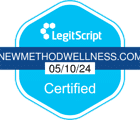Most people who struggle with addiction are aware that they likely have to go through detox as an initial step toward recovery. Depending on the substances that you used, you may experience acute withdrawal symptoms as you eliminate the drugs from your body. In most cases, acute withdrawal symptoms last no longer than two weeks after detox. However, some people develop post-acute withdrawal syndrome, or PAWS, which lasts longer.
Post-acute withdrawal syndrome refers to a combination of withdrawal symptoms that stick around after your acute withdrawal symptoms have subsided. Most acute withdrawal symptoms are physical as well as psychological. For example, while you’re going through the initial phase of detox and withdrawal, you might experience:
• Fever
• Nausea and vomiting
• Cramping
• Aches and pains
• Headaches
• Tremors
PAWS tends to bring on more psychological withdrawal symptoms. Although some people continue to experience physical withdrawal symptoms, most people with PAWS notice intense moodiness, cravings and emotional discomfort.
PAWS symptoms tend to crop up unexpectedly and come in waves. If you experience PAWS, you could cycle through these withdrawal symptoms for up to one year.
What Causes Post-Acute Withdrawal Syndrome?
Experts aren’t exactly sure what contributes to post-acute withdrawal syndrome. Some people never experience PAWS, while others do. One of the common theories about what causes PAWS is that your brain takes time to achieve equilibrium without the use of chemicals.
The brain and body undergo chemical changes when you consume substances. Detox helps balance the body, helping it get used to life without drugs. But your brain has to rebalance itself too.
Your brain and body are pretty miraculous. Your central nervous system secretes neurotransmitters that help to regulate your mood. But when you use substances, you throw off the body’s natural ability to make you feel better. Your levels of mood-enhancing chemicals shift, making you think that you need the drug to feel normal.
As your brain recalibrates itself, your neurotransmitter levels regain equilibrium. But this can take some time and make you feel moody and uncomfortable as you heal.
Stress can exacerbate PAWS. So can adjusting to a new way of living. Many people who have struggled with addiction have to learn new, healthy behaviors. Everything that they do, from the friends that they hang out with to the work that they complete, may feel different. Dealing with these shifts can produce emotional upheaval.
Post-Acute Withdrawal Syndrome Symptoms
Some of the most common withdrawal symptoms of PAWS include the following:
• Irritability
• Hostility
• Mood disturbances
• Depression
• Anxiety
• Fatigue
• Low energy
• Insomnia
• Inability to concentrate
• Foggy thinking
• Low libido
• Unexplained pain
Even though these withdrawal symptoms may not be as physical as acute withdrawal symptoms, they can be just as intense. These long-term withdrawal symptoms may arise unpredictably and can make you feel extremely uncomfortable. However, they won’t last forever.
Post-acute withdrawal syndrome can happen a few weeks or several months after going through detox. The syndrome is temporary, but it can feel debilitating.
You might feel fine for several months after detox and then get bombarded with a roller coaster of withdrawal symptoms. As they disappear, you find relief.
But they may return within a few weeks or months. As you go longer without using drugs, you’ll find that the symptoms take longer to return. Each bout of PAWS should only last a few days once you have been in recovery for a while.
Experiencing secondary withdrawal symptoms just when you thought that you were in the clear and on your way to recovery can leave you feeling hopeless. In fact, PAWS can lead to relapse because taking the drug again is a surefire way to relieve withdrawal symptoms. But that might not be the best way to handle it.
Can PAWS Symptoms Occur With Any Substance?
Any intoxicating substance can generate PAWS symptoms. People who have used substances for a long time and in greater doses tend to be more susceptible to post-acute withdrawal syndrome after detox.
Post-acute withdrawal syndrome is more likely to occur when you have stopped using the following drugs:
• Alcohol
• Benzodiazepines
• Marijuana
• Opioids
• Stimulants
Withdrawal from these and other drugs must be managed appropriately. In some cases, it’s unhealthy and potentially life-threatening to quit certain drugs cold-turkey.
For example, if you have been consuming alcohol in large quantities for a significant period of time, you could develop seizures and psychosis by eliminating it from your system quickly. If you don’t undergo withdrawal properly, you could increase your likelihood of developing PAWS.
How to Manage Post-Acute Withdrawal Syndrome
You may not be able to prevent post-acute withdrawal syndrome. However, you can manage your PAWS symptoms.
Getting support and taking care of yourself should be your priorities in the first few years of recovery. Meet with a behavioral health professional regularly to discuss how you’re feeling and learn coping strategies. Attend support groups or meet with your sponsor or peers if you’re struggling.
When you’re working with a therapist or talking to your peers, you can learn more about what to expect from recovery. Behavioral Health professional can educate you and help you understand what you’re going through.
Knowing what to expect can ease some of your fears and help you find some peace during recovery. A therapist or counselor may also bring your awareness to co-occurring disorders, which might generate some of the emotional strife that you experience with PAWS.
Your behavioral health provider will also be able to assist you if you experience emotional strife during recovery. Stressful events can make PAWS worse and impact your recovery if you don’t know how to deal with them while sober. Lean on your support team to get the tools that you need to navigate the new pressures and manage your emotions.
Self-care and patience are also crucial to your well-being. Recovery may not move as quickly as you had hoped. You may not feel as confident and comfortable in your new lifestyle as you expected.
Healing from addiction is hard, and you may have a long road ahead of you. Give yourself grace and compassion.
Allow yourself to ease back into a healthy life. Get plenty of rest, and allow yourself to take breaks. Listen to your body, and be good to yourself.
Some alternative approaches to addiction treatment use techniques such as yoga, meditation and creative therapy to help you learn more about yourself as you go through addiction recovery. These approaches can be immensely valuable in managing post-acute withdrawal syndrome.
At New Method Wellness, we want our clients to feel as secure and comfortable as possible during every phase of their recovery. That’s why we offer a variety of approaches to addiction therapy. We are here for you whether you’re exploring treatment for the first time, struggling with PAWS or looking for support and treatment during detox and beyond.
For more information about our Aftercare Program, visit our website or call 866.951.1824







